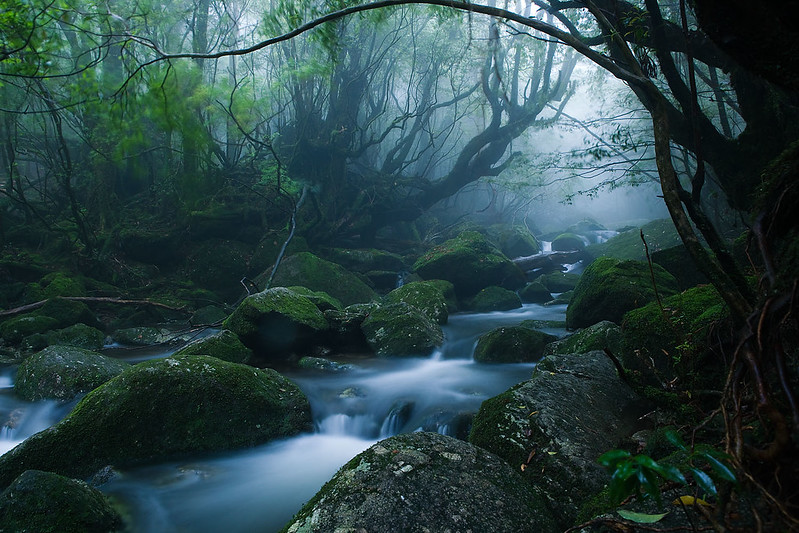Octopuses are some of the most fascinating creatures in the ocean, known for their intelligence, adaptability, and often surprising size. While some species are small and delicate, others grow to impressive lengths, making them giants of the deep. Each species has unique characteristics—from vibrant colors to complex camouflage techniques—that help them thrive in diverse marine environments. Some octopuses inhabit shallow coral reefs, while others dive to the darkest depths of the sea. Understanding these remarkable animals not only reveals their role in marine ecosystems but also shows the vast range of adaptations needed to survive in the ocean.
Giant Pacific Octopus (Enteroctopus dofleini)

The Giant Pacific Octopus is the largest octopus species known to exist. Some individuals have reached arm spans of up to 20 feet and can weigh more than 150 pounds, though most average around 33 pounds. This species thrives in the cold waters of the North Pacific, from Japan to the western coast of the United States. With its reddish-brown skin, it’s adept at blending into its rocky surroundings. Giant Pacific octopuses are also renowned for their intelligence, capable of solving puzzles and even escaping enclosures. Their diet consists of crabs, clams, and small fish, which they skillfully capture with their powerful arms. Their lifespan is around 3 to 5 years, which is long for an octopus species.
Seven-Arm Octopus (Haliphron atlanticus)
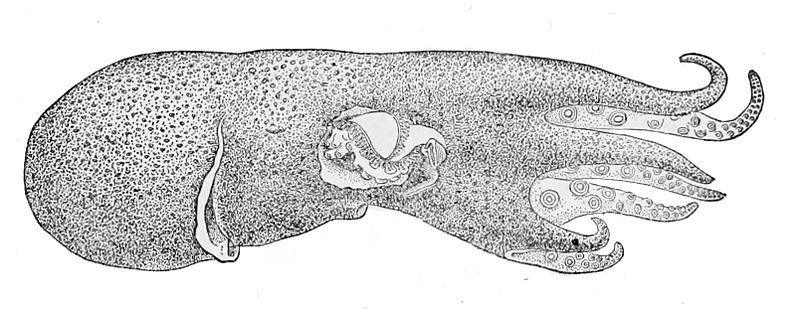
Despite its name, the Seven-Arm Octopus actually has eight arms, though one is often hidden, giving the appearance of seven. This elusive deep-sea species can reach lengths of up to 11 feet and weigh around 165 pounds. It primarily inhabits the dark, cold depths of the Atlantic Ocean, where it uses its substantial size to deter predators. Its gelatinous body and long, tapering arms give it an almost otherworldly appearance. Like many deep-sea octopuses, it feeds on jellyfish, using its arms to capture and immobilize prey. This species is rare, and sightings are infrequent, making it a mystery to marine biologists. Known for its solitary nature, the Seven-Arm Octopus is one of the largest and most enigmatic cephalopods.
East Pacific Red Octopus (Octopus rubescens)
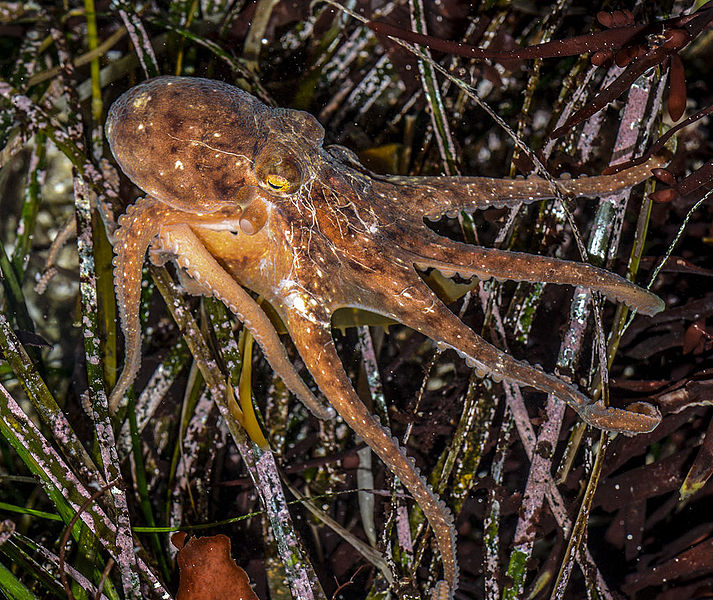
Though not as massive as some other species, the East Pacific Red Octopus can grow up to 5 feet across, making it the largest of the smaller Pacific octopuses. It is commonly found along the coasts of North America, from Alaska to California. This species is known for its bright red color, though it can change shades to blend with its environment. East Pacific Red Octopuses are agile and known for their hunting skills, often preying on clams, crabs, and fish. They have a relatively short lifespan of about two years, which is typical for smaller octopus species. Their intelligence is evident through problem-solving abilities, especially in captive environments. They play a crucial role in marine ecosystems as both predator and prey.
Common Octopus (Octopus vulgaris)
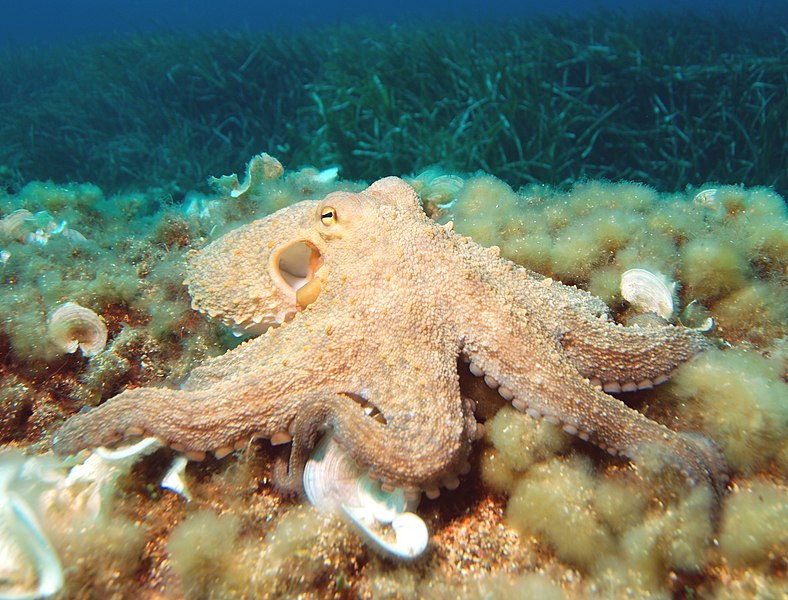
The Common Octopus is one of the most widely distributed and well-known species, reaching up to 4 feet in arm span. Typically weighing around 22 pounds, this octopus is known for its adaptability and intelligence. It inhabits warm, shallow waters worldwide, especially in tropical and temperate seas. The Common Octopus uses its arms to capture a wide range of prey, from crustaceans to mollusks. Its ability to change color and texture makes it an expert at camouflage. This species has a short but impactful life, generally surviving only 1 to 2 years. Its curiosity and problem-solving skills have been widely documented in both natural and controlled settings.
Caribbean Reef Octopus (Octopus briareus)
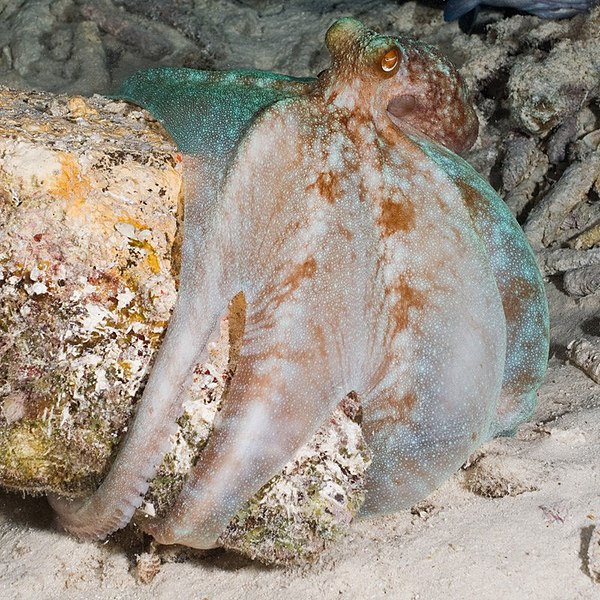
The Caribbean Reef Octopus is a vibrant species, with an arm span of up to 3 feet and a weight of around 6 pounds. It resides in the warm waters of the Caribbean Sea and is known for its striking blue and green colors. This octopus can change color rapidly, making it nearly invisible to both prey and predators. It feeds primarily on small fish and crustaceans, ambushing them with surprising speed. Unlike some other octopus species, the Caribbean Reef Octopus is more social and often interacts with divers. Its short lifespan, around 1 to 2 years, is spent actively hunting and breeding. The Caribbean Reef Octopus is an important part of the reef ecosystem, balancing prey populations.
Mimic Octopus (Thaumoctopus mimicus)
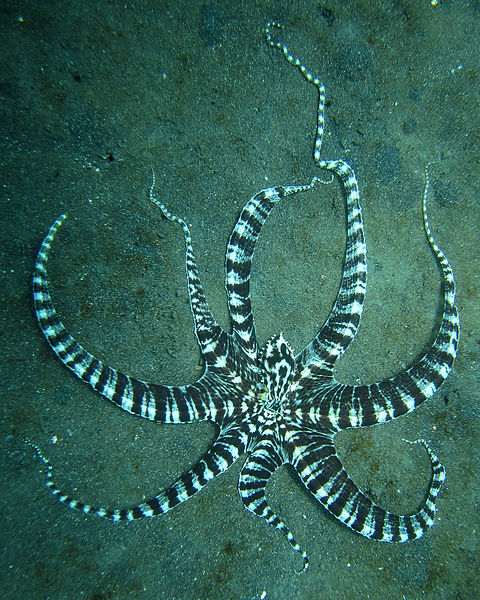
Although smaller than some other species, the Mimic Octopus is known for its remarkable ability to imitate other sea creatures. It can grow up to 2 feet in length and has an arm span of nearly 3 feet. Found in the shallow waters of the Indo-Pacific, this octopus is a master of disguise, often mimicking the shape and movement of venomous creatures like lionfish and sea snakes. Its unique behavior helps it avoid predators and ambush prey. The Mimic Octopus is light brown with darker markings, allowing it to blend with sandy seafloors. This species has captivated scientists with its intelligence and adaptability. Its ability to change form is a survival strategy rarely seen in the animal kingdom.
Blue-Ringed Octopus (Hapalochlaena spp.)
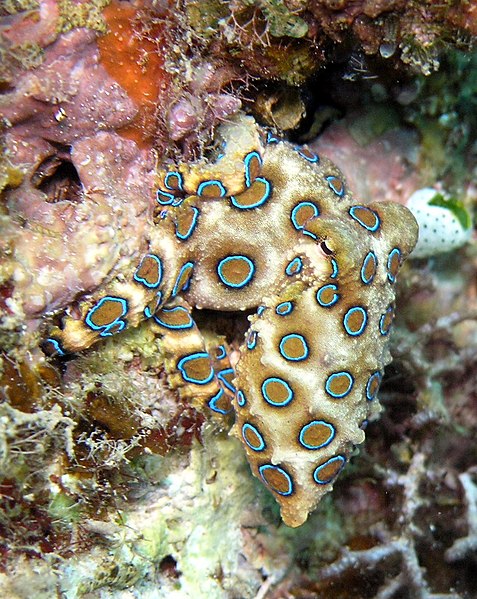
Known for its vibrant blue rings, the Blue-Ringed Octopus is small but deadly, reaching up to 8 inches in length. Despite its small size, this octopus’s venom can be fatal to humans, making it one of the most dangerous octopuses. It inhabits shallow tidal pools in the Indo-Pacific and is often found hiding under rocks and coral. When threatened, its rings become more vivid, warning predators to stay away. This species primarily feeds on small crustaceans and fish, using its venomous bite to immobilize prey. The Blue-Ringed Octopus has a short lifespan of around one year, typical for smaller octopuses. Its deadly beauty makes it both feared and admired in its habitat.
Atlantic Pygmy Octopus (Octopus joubini)
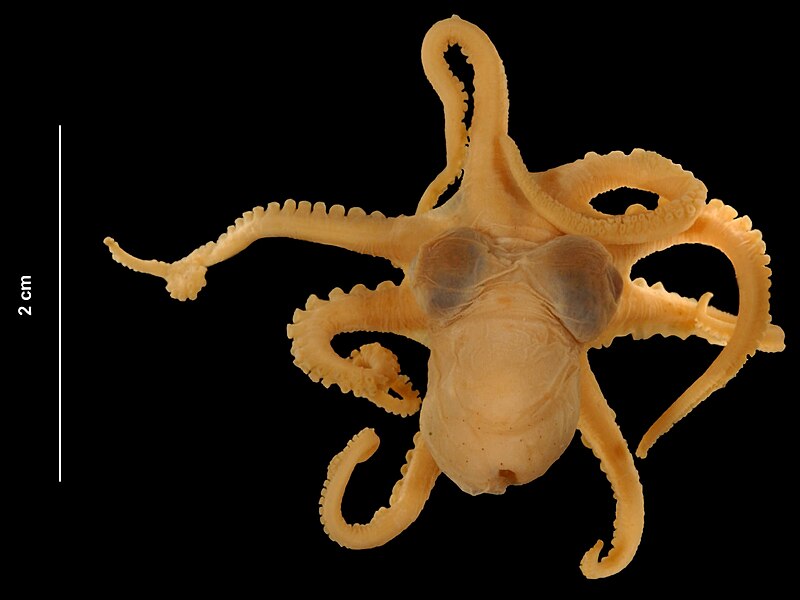
The Atlantic Pygmy Octopus is one of the smallest octopus species, measuring up to 6 inches in length and weighing only a few ounces. It inhabits the shallow waters of the Atlantic Ocean, particularly around Florida and the Gulf of Mexico. This tiny octopus is known for its intelligence, able to solve puzzles and even open jars. Its coloration ranges from light brown to reddish, with the ability to change color for camouflage. The Atlantic Pygmy Octopus primarily preys on small crabs and shrimp, using its arms to capture and hold its meals. Its short life cycle, only about a year, is filled with constant foraging and hiding from larger predators. Despite its size, it has a significant role in the marine ecosystem as both predator and prey.
Dumbo Octopus (Grimpoteuthis spp.)
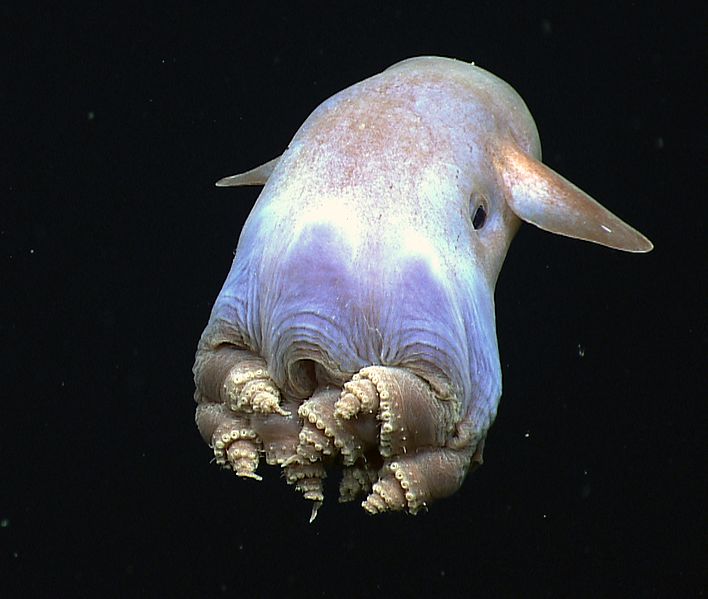
The Dumbo Octopus is named for its ear-like fins that resemble the ears of Disney’s Dumbo. Found at extreme depths of up to 13,000 feet, it can grow up to 6 feet in length, which is large for a deep-sea octopus. Unlike other octopuses, it doesn’t have an ink sac since there are few predators in its environment. Its soft, gelatinous body and umbrella-like webbing between its arms give it a unique appearance. The Dumbo Octopus glides gracefully through the water, using its fins to move. It primarily feeds on small invertebrates, which it swallows whole. This gentle creature has fascinated scientists due to its unusual appearance and mysterious deep-sea lifestyle.
Common Blanket Octopus (Tremoctopus violaceus)
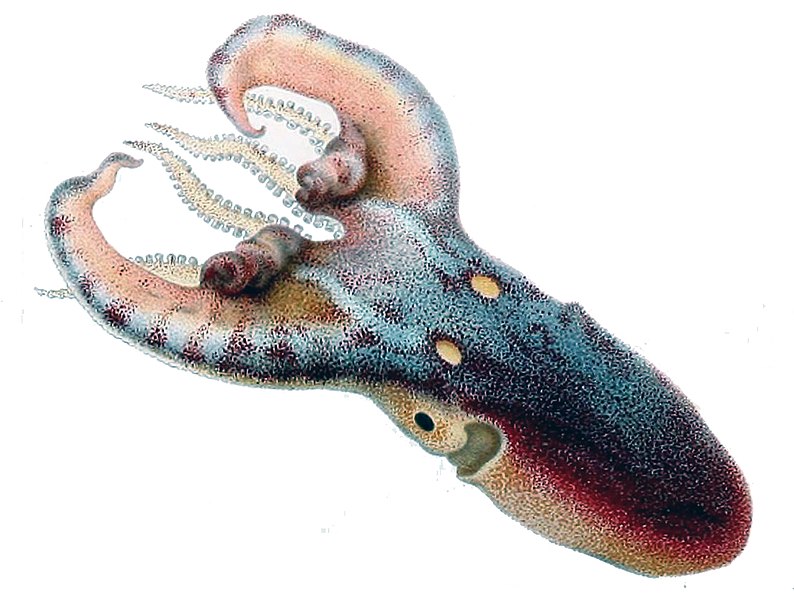
The Common Blanket Octopus is known for its striking appearance, with females reaching up to 6.6 feet in length, while males are only around 1 inch. This size difference between males and females is one of the most extreme in the animal kingdom. The female possesses long, webbed arms that resemble a blanket, which can be unfurled to appear larger when threatened. Found in tropical and subtropical oceans worldwide, this octopus uses its “blanket” to scare predators away. It is also known to rip tentacles from jellyfish to use as a weapon. The Blanket Octopus is a mesmerizing sight in the open ocean, showcasing vibrant colors and flowing movements. Its dramatic size difference and unique adaptations make it one of the most intriguing octopus species.
Veined Octopus (Amphioctopus marginatus)
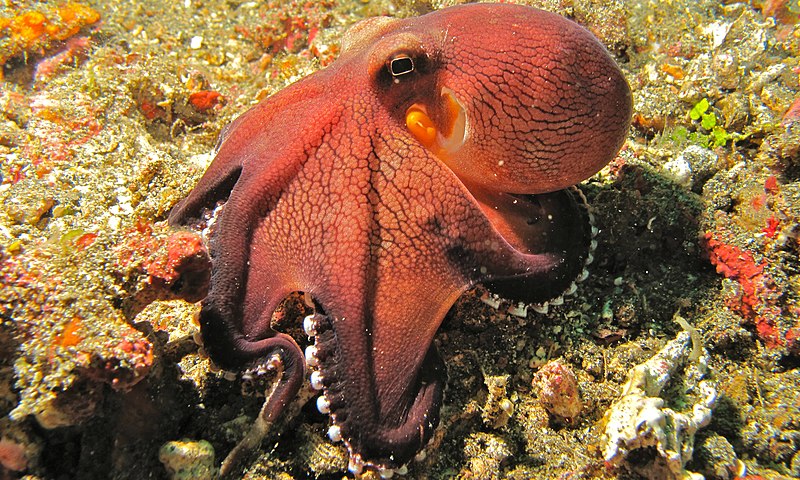
The Veined Octopus, also known as the Coconut Octopus, can reach up to 3 inches in length and has an arm span of up to 6 inches. This species is known for its remarkable intelligence and tool-using abilities, often seen carrying coconut shells for protection. Found in the sandy and muddy ocean floors of the Indo-Pacific, it uses its veined skin pattern to blend with the surroundings. The Veined Octopus feeds on small crustaceans and mollusks, skillfully capturing them with its arms. Its behavior is highly adaptive, allowing it to exploit various resources in its habitat. This octopus’s intelligence has gained the attention of researchers studying animal cognition. It is one of the few invertebrates known to exhibit tool use, a trait rare in the animal kingdom.
Flapjack Octopus (Opisthoteuthis californiana)
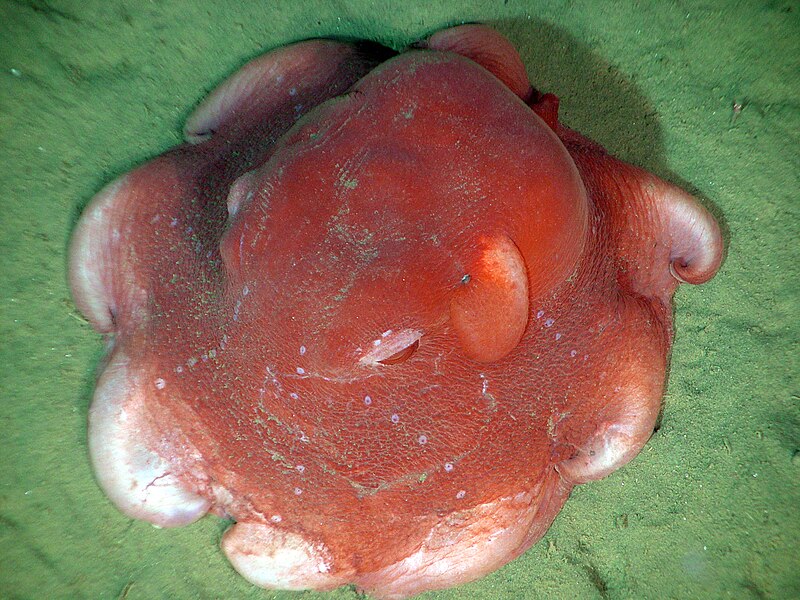
Known for its round, pancake-like body, the Flapjack Octopus grows up to 7 inches in length. It inhabits the deep waters off the coast of California, where it uses its webbed arms to “flap” around in search of prey. This octopus has a gelatinous, soft body and is often seen gliding along the ocean floor. Its reddish-brown coloration helps it blend with the deep-sea environment. Unlike many octopus species, it doesn’t use ink for defense, relying on camouflage instead. The Flapjack Octopus feeds on small crustaceans and worms, which it captures with ease. Its adorable appearance has made it a favorite among marine biologists and enthusiasts alike.
Atlantic White-Spotted Octopus (Callistoctopus macropus)
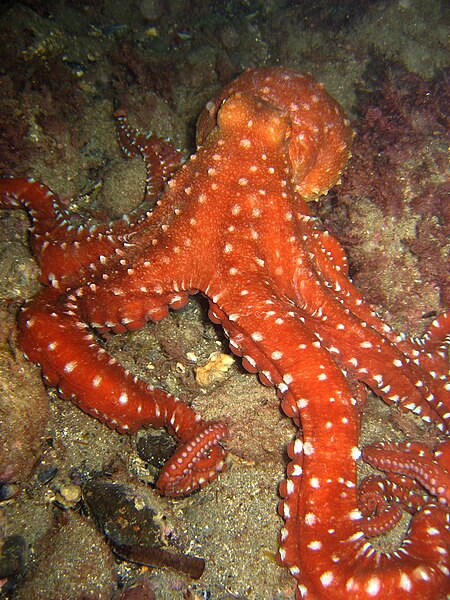
The Atlantic White-Spotted Octopus can grow up to 2 feet in length, with a unique pattern of white spots on its reddish-brown body. It inhabits the warm waters of the Atlantic Ocean, particularly near coral reefs and rocky areas. This species is known for its nocturnal hunting habits, often preying on crustaceans and mollusks. It’s a quick and agile swimmer, using its arms to capture and subdue prey. The Atlantic White-Spotted Octopus is also highly skilled in camouflage, blending with its surroundings during the day. Its short lifespan is typical for octopuses, generally around one to two years. Its distinctive coloration and behavior make it a fascinating sight for divers.
Lesser Pacific Striped Octopus (Octopus chierchiae)
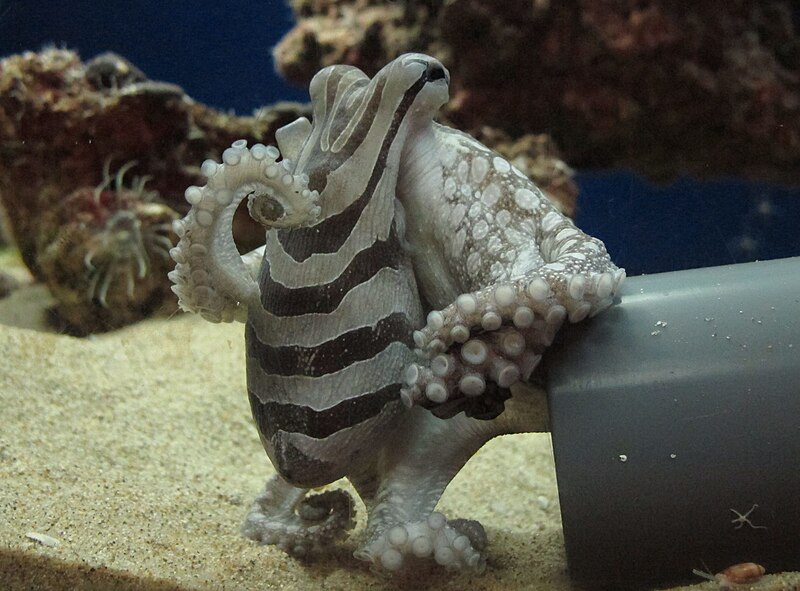
The Lesser Pacific Striped Octopus is a small but striking species, reaching lengths of up to 3 inches. Its black and white striped pattern is unique among octopuses, making it a visually stunning species. This octopus is native to the eastern Pacific Ocean, particularly near the coasts of Central America. It is one of the few octopus species that exhibit social behavior, often living in small groups. The Lesser Pacific Striped Octopus feeds on small crustaceans and mollusks, using its specialized hunting techniques. It has a relatively short lifespan, like many octopuses, but its social behavior has intrigued scientists. Its distinct appearance and social nature make it an unusual and interesting species.
This article originally appeared on Rarest.org.
More From Rarest.Org
Beneath the waters of our oceans, lakes, and rivers lie remnants of ancient civilizations, long forgotten but slowly revealing their secrets. These underwater ruins offer a glimpse into the past, from sunken cities that once thrived in trade and culture to temples dedicated to ancient deities. Read more.
The largest universities in the world serve millions of students, offering a wide range of academic programs and often playing a crucial role in shaping the educational landscape of their respective countries. These institutions not only boast massive student populations but also provide flexible learning options, including traditional on-campus education and distance learning programs. Read more.
The world’s forests are more than just lush landscapes; they are living testaments to Earth’s ancient history. Some of these forests have stood for millions of years, surviving ice ages, climatic shifts, and human impact. Read more.



